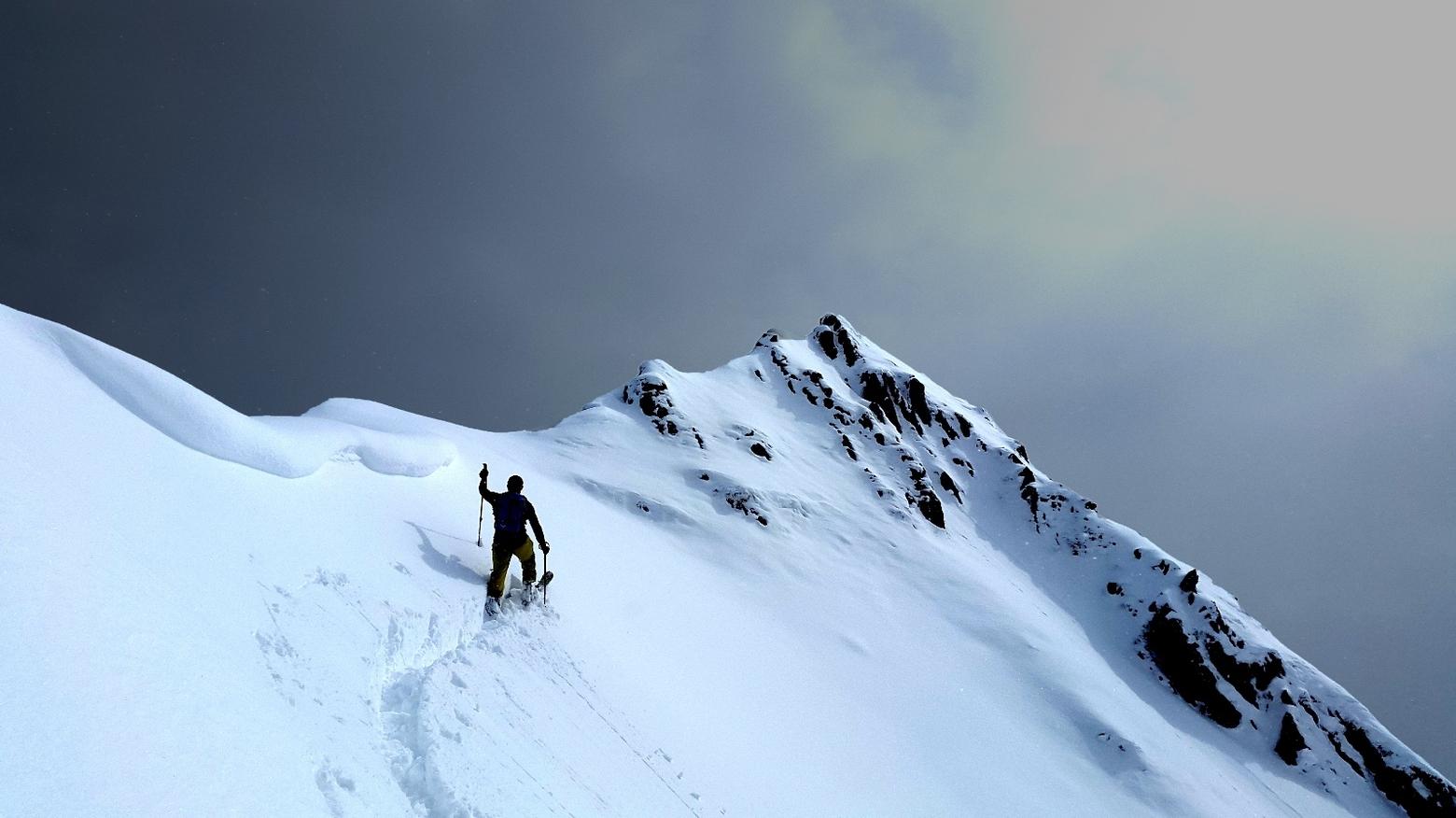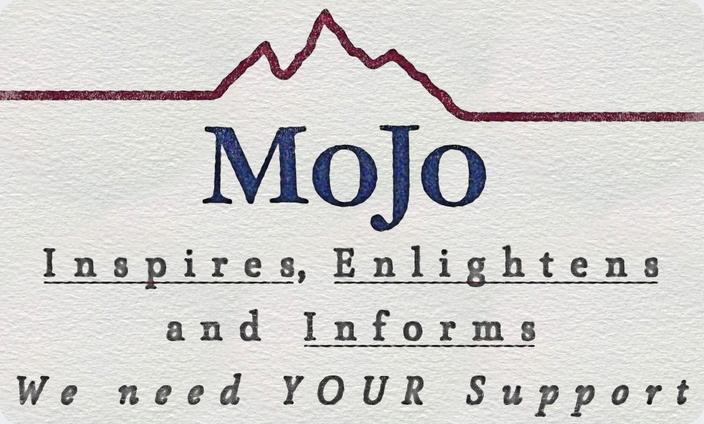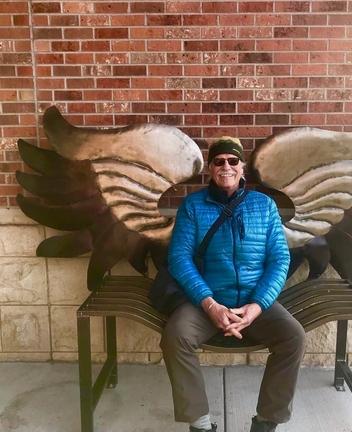Back to Stories
Throughout his teenage years, Walt held an
enduring memory of a park ranger decked out in crisp green and grey, sidearm
holstered, flat brimmed hat tight on his clean shaven head, directing traffic
around a herd of bison crossing the highway in the Lamar Valley. Though Walt
had only caught a brief glimpse of this heroic figure as an impressionable child, the image was
vivid enough to keep re-appearing in his dreams.
November 21, 2017
When Peter Pan Enters Middle Age
Part 1 In Therapist Timothy Tate's Exploration Of What Happens When Men In Mountain Towns Have To Stop Playing And Grow Up
“When I began climbing hard I figured I
wouldn’t live past 26. Strangely, I’ve lived almost 30 years after my predicted
expiration date. I’ve quit counting on ‘No Future’ and learned to live with not knowing the
future.” —Mark Twight
Compete, consume, hunt, gather, extract—the
edge of masculinity cuts deep into the fabric of humanity.
Each man will reckon with this edge, whether
he wants to or not. This is a well-established process in male psychological
development, and it enters often into conversations I have with men passing into and through middle age. It involves the eternal reflection on what is—and what might have been.
Some also wonder: could I have been more, and what more could I have been?
Now that the years have
come and the steady descent awaits, how do I make sense of this thing called
life?
Yes, this thing we call the midlife crisis is no mere cliche; for fun hogs it can be a period of crisis in dealing with loss of identity.
Location, context, and culture contribute to
how a man will face the force field of his manhood. In mountain towns like ours,
the quest to define one’s own masculinity takes many forms—the priorities of
today’s seekers are different from those who first homesteaded at the base of these
peaks or slept in tepees, when the focus of necessity was on having enough food and shelter
to get one’s family through winter, but no less critical to defining who they
are.
Outdoor towns tend to be different from other
places. It is a difficult thing to indulge the self without becoming consumed by self-focus; even harder not to lose
one’s bearings or pursue a “lifestyle” that leaves one narrower and emotionally stunted.
I have a person in mind—actually several—whose stories form a composite and yet whose amalgamation speaks to the perils of the modern journey and the possibility that one could land on the shoals.
For purposes of anonymity, let's call this composite of people “Walt”.
Hailing from a metropolitan area not unlike
the kind many of his future contemporaries would escape, Walt first discovered
the Greater Yellowstone Ecosystem on a family summer vacation to Yellowstone
National Park as a child many years ago.
He made a silent vow as a boy, when he first
laid eyes on the Beartooth Mountains, to return as soon as he could to make a
life for himself in the Wild West.
"Some wonder: could I have been more, and what more could I have been? Now that the years have come and the steady descent awaits, how do I make sense of this thing called life? Yes, this thing we call the midlife crisis is no mere cliche."
Walt knew in his boyhood heart that this image
of a solitary man, standing tall with authority and dignity, possessed deep
resonance.
Notably, his aspirations of becoming a park
ranger in the interior West did not conform with the prevailing family values at home. The vision of “success” being projected upon
him, that meaning was found in the pursuit of upward mobility and a house in the suburbs, led his parents
to steer him towards a career in corporate America.
Defying his parents, Walt disregarded their
list of “acceptable” schools and settled on Montana State University in
Bozeman where he would pursue a major in something practical and a minor in skiing. Although they took exception to
his move so far away from home, they were pleased that he chose civil
engineering as his major. He assured his worried mother that she would enjoy
visiting him in the winter, as skiing was their family’s sport.
Walt’s college years unfolded. He worked part-time
at a local ski shop during the academic year and for a landscaping crew during
the summer. He neither excelled nor failed in his studies, but engineering
failed to spark any passion. After his sophomore year, he decided to focus on a
soil and water sciences degree. Somewhere
along the way, Walt discovered the potency of local marijuana, particularly Gallatin Green, and what was initially
recreational use riding the chairlift developed into a full-on daily habit.
Falling in
and out of love several times and preferring friendships with benefits to a
committed relationship, Walt followed the pattern of his peers: cutting classes
on powder days to take in the white smoke at Bridger Bowl.
Despite his less than dogged commitment to education,
graduation day eventually came. For a man in his early twenties, Bozeman was a
fun, carefree place to be and bide one's time. A serious career could wait. Walt became a service
worker, parlaying his wages and tips into an easy, if not shortsighted, system,
enabling him to perpetually fly fish, mountain bike, rock climb and still pay the rent.
A few cans of PBR eventually became a few
pints of stiffer local microbrews, which soon became a few drams of whiskey. Walt
convinced himself that being physically active mitigated what others might
consider addiction, a rationalization he found that his climbing and biking buddies
agreed with.
A few years went by. Now in his early thirties, Walt rented an
apartment with another man who ski patrolled during the winter and guided
fishing trips in summer. His Tacoma pickup truck gave him access to the end of
dirt roads where wilderness began, places that felt like they were his,
and he took advantage every chance he had. A serious career? Responsibility? Commitment? These were things that hobbled Walt's boyhood friends back in the city, but in Bozeman, Montana, there were no worries.
Walt, after all, was fit, gregarious, and popular. Polyamory had become a thing which suited him
just fine, finding that woman were as sexually free as he considered himself to
be. Life was good.
Yet a nagging sense of loneliness would creep
into him from time to time. He had
without realizing it come under the power of Puer aeternus, the Peter Pan
Syndrome.
A few more years passed and slowly he knew a different kind of restlessness. As internal anxiety rose, Walt sated his
unease by taking on more challenging climbing routes, steeper downhill
mountain bike rides, and fishing in deeper, faster currents where occasionally he lost his footing. However, it felt like the
more stimulated he was the more alive he felt.
Then one day, while skiing off the ridge at
Bridger Bowl, Walt caught an edge, sending him into exposed rock and crushing
his femur. His roommate happened to be on the ski patrol that day, and assured
him on the sled down to the base that he would heal quickly and catch some spring
runs down the “Great One” coulier.
Walt stoically agreed, although with no insurance he watched bank account drained to pay the bill. In the days,
weeks, and months to come his loneliness festered into depression. He dove into
his physical therapy regime to emerge stronger than before cajoled his on-and-off girlfriend to move in with
him, and received both financial and emotional support from his family.
Walt defined physical strength in terms of capacity to endure
pain and hardship without showing emotion. His girlfriend, wanting tenderness, grew weary. His cronies, a cohort of younger men in whom he saw his former self, would exhort him to
“cowboy up”. He felt pride in how quickly he rebounded from such a
devastating injury, and even more so in how little outside help he needed to do
it.
Initially his girlfriend seemed impressed with
his stoicism, and Walt was elated when he overheard her telling her friends he
was “the strong and silent type.” Soon
though she began insisting on more from him- that they relate, communicate, and
take things slowly. He loved connecting
physically, but was at a loss when she kept talking about how she felt.
She was no longer with him when he celebrated
his 40th birthday with a line of shots at the Haufbrau.. The bros of his twenties and early thirties had, by then,
coupled up and married. Some were taking their kids to sports practices and
school events and when he reached out, asking them to have a drink or steal away a powder day, they would
say, “sorry, I have to get home,” their wives were expecting them.
Walt still poured himself into seizing powder
runs and hammering through tough rides in the Gallatins. He would tell his old
buddies about his adventures, of how he still racked up 110 days on the slopes, and he was disappointed that they no longer appreciated
the epic nature of his feats.
But Walt was a legend to young men half his age, to
whom he served as the keeper of lore and, for them, was the paragon of what it
means to be an active old guy. In their eyes, he still was The Man.
Down at the bar, he was introduced to a fresh
year of guys who had come West to ski. He noticed how young they looked, and all at once he felt old—not older, but old. “How can I feel old at forty?”
This unspoken thought rattled around in his
head all night, while his younger friends vigorously debated ice-climbing
routes. The din of the banter crackled
in his brain like a leaf blower, monotonous and indistinct. He was swirling
around the drain of his youth.
Walt pounded another pint, excused himself
from the gang and, although buzzed, figured he knew Bozeman like the back of
his hand and could surely make it home if he stayed off the main roads. Tooling
down residential unmarked intersections, he was mentally fuzzy about who had
the right of way.
Crash.
The police showed up and the DUI citation came with advice from his attorney
to seek counseling. The idea initially repulsed him. How could he benefit from whining to some
shrink?
Walt’s entire persona was
founded on independence; needing the help of another was antithetical to
who he tried so hard to be. He told himself he would only enter counseling to avoid jail time, that it would make
him look good in the judge’s eyes. Thus, Walt came behind The
Blue Door and shared the story above. Alone, his was a tale I had seen in countless ways before.
For Peter Pan, life had suddenly turned real.
EDITOR’S NOTE: In
the next installment, Timothy Tate enters Walt’s head.





